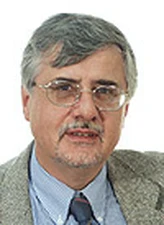John Woodhouse

The 2008 Beno Gutenberg Medal is awarded to John Woodhouse for his pioneering and unselfish contributions to theoretical, observational and computational seismology, which led to major discoveries on the Earth’s internal structure and earthquake characteristics.
John Woodhouse is first of all an exceptional theoretician. Combining refined mathematics with insightful physics, he developed many new ways of analysing seismic data. Most of his theoretical contributions led to important applications. Prominent examples are the CMT algorithm, the use of splitting functions to map Earth structure and his ingenious waveform inversion using asymptotic properties of normal modes. Most seismologists around the world still use codes developed by John or that can be traced back to him.20 years ago, John’s work resulted in the first 3D shear velocity model of the entire mantle and explained the anomalously split modes by inner core anisotropy. These models have only marginally changed over the years. The main improvements concerned the uppermost mantle, using high frequency surface waves, and the mid-mantle, using overtones, both directions started on a global scale by John in Oxford. All these achievements would not have been possible, if John Woodhouse had not a deep understanding and interest in seismic data. Upon arriving in Oxford in 1992, he built a waveform data base using ingenious software, all developed by himself. Most existing data centres acknowledge a request by email and the user has to download the data manually. John realised that it would be more flexible if the data centre would send the data directly to the user provided the user can make ‘smart’ requests. This development allowed efficient and automatic data processing at an unprecedented scale. Surprisingly, 15 years later this still has not become the standard in most world data centres.Similar to Gutenberg, there are not many topics in seismology, John Woodhouse has not touched upon. Most prominently, he taught us that combining useful theory with powerful computers can revolutionise seismology. His thoughts on a given topic often set a trend for further analysis. Unsurprisingly, ISI has identified John has a highly cited researcher in his field, he has received 2 AGU medals and is a fellow of the Royal Society.
